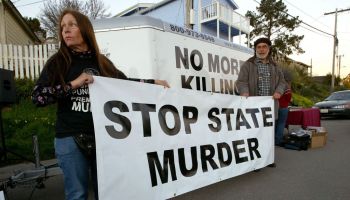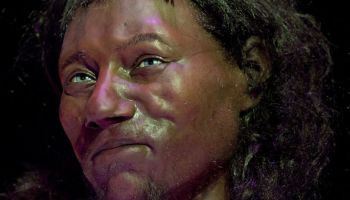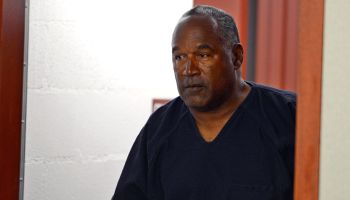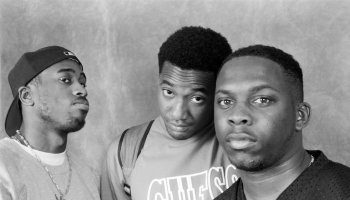This article is Part 2 of “San Fran Youth Are In A Perpetual State Of Grief,” a NewsOne original feature on the post-tramautic stress disorder (PTSD) of San Francisco youth, who live in the gang-ridden confines of the Mission District of San Francisco. There, youths struggle to find a life worth living in the midst of loved ones and friends being killed on a daily basis. Here is the second and final installment.
PART 2
On foot, I zigzag through the Mission District every time I enter and exit the area. I believe it’s an important survival tactic never to walk in predictable patterns in urban areas. It’s a great way to learn a lot about the hood, and more importantly, get a deeper feel for the reality on the streets. I’m nobody important walking the streets, but you don’t have to be anybody to catch bullets or blades in the Bay Area.
After settling into work, I opened the San Francisco Examiner and saw another shining example of why our children are so traumatized by a vicious climate of violence. Every day it appears to get more and more heartless. A 17-year-old boy was shot after getting into an argument with a man on a bus. The boy got off to avoid conflict and was apparently fired at by a shooter who stood on the bottom step of the bus.
‘LIKE’ NewsOne’s FB Page To Stay Up On Black News From Around The World
Cops were called to the unit block of Garrison Avenue at 1:37 p.m. They found the teenager suffering from three to four gunshot wounds, police Officer Carlos Manfredi said Tuesday.
The boy was taken to San Francisco General Hospital with life-threatening injuries, police said. His condition was unknown as of Tuesday. The shooting is believed to be gang-related.
A scene like that is unimaginable for someone from my generation, but the youth of today are enduring a new level of violence that has given rise to an entire nation of poor Black, Latino, and White youth walking the streets with post-traumatic stress disorder (PTSD), undiagnosed and untreated.
In the hood, it’s what rapper T-KASH calls “Turf War Syndrome“:
I’m paranoid like The President/ Standing on the steps of my residence/My brothers swallowing the federal evidence [drugs]/The same cats we cop it from, bust for selling it/Granny called me a delinquent/The streets see you eating and perceive it as threatening…It’s full circle — the money is God, the game is religion/The corner store is the holy land/Prison is crucifixion.
One day I was playing chess with a student named Shaka in the lobby of John O’Connell High School. He’s a good kid. The first time he was shot, he was about 13. The shooting scarred him emotionally on several levels: he smokes a lot of weed and drinks heavily on the weekends.
In the middle of the chess game, a girl with some birthday balloons began to play with her friends across from us in the lobby. Another boy named Huey popped one of the girl’s balloons and Shaka almost jumped a foot out of his seat. In a rage, Shaka charged Huey, pushing him against a wall. “That shit is not funny man. It’s not a game out here! Why would you do that?!” Huey shrunk back in complete horror. I ran between them and told Shaka, They were playing. It was an accident. Calm down, man, let’s get back to the chess game. It took time for him to hear me through the fog of war. Shaka was shot at least once after I knew him. He never notified the police. That was the first time it really hit me that America had its own child soldiers. They were not enlisted by northern Ugandan terrorist Joseph Kony, but they still are on the frontlines. The trenches run through the heart of San Francisco.
I once asked Shaka, How many times do you think God will allow you to get shot before you change your life or he takes you home? “I don’t know,” he responded, walking away from me. “That’s too deep for me to think about.”
Meet Mrs. Lightfoot.* She’s the only Black female counselor at John O’Connell. The school has no Black teachers. In a city so well-known for diversity, it’s a bizarre and tragic fact. Over the years, she has sat with numerous kids crying over their dead friends. She’s an academic counselor, not a school therapist. Still, Mrs. Lightfoot’s empathy for the youth is too great to ignore their trauma. When asked what the solution is, she says that the school district needs “more training for young people coming out of school to deal with the issue of multiple deaths. There are not enough resources. So they cannot possibly empathize with someone who is dealing with multiple deaths. It’s like a war zone.”
Indescribable Pain
The role of hip-hop in understanding the impact of urban violence cannot be overstated. Without it, there is no record of its existence. This is a silent war. Most of these kids will die before any of us knew they existed. They are the invisible dead.
Bone Thugs and Harmony’s “Crossroads (above),” Dr. Dre and Snoops‘ “Imagine,” Master P’s “I Miss My Homies,” and Tupac Shakur’s “Pour Out A Little Liquor” speak to the agony of the cycle of death. Yet these songs are just scratching the surface of coping with the pain of being surrounded by death. A rapper named Haystack made quite a haunting track called “I Wish You Could See Me.”
In it, he says:
One more homey that we lost to the late night/Kill the headlights and pull up to the grave site/We were there for 20 minutes seemed like forever it lasted/His brother broke down his moms collapsed on the casket/I saw the caretaker throw the first shovel of dirt/I can’t begin to describe how much that hurt.
I asked a San Francisco police officer what he thought would happen to these kids if they do not get consistent treatment, “They will fall in to the same cycle [of violence]. They’ll be the ones caught up in the criminal justice system. They’ll be arrested. That will prevent them from getting a good job after release. They are going to do whatever they have to do to get money, which means crime. They lose hope that they will ever get a good job eventually. So they figure they’ll have to sell dope to make money and the cycle keeps going on.”
Another teacher at the school agrees. “Many of them get into using drugs and alcohol — as a form of escape. Others have difficulty performing at school. Many have truancy issues because they are depressed. They are angry, and they just don’t want to be here.”
I feel like this teacher is right about most of this issue, especially the drug use. When I came here about three years ago, drug and alcohol use was pretty heavy. It has gone down dramatically, but I’m not sure why. I don’t know if the schools are doing a better job or if we are just not catching them like we used to.
CBS News reported in 2010 that “a small clinical trial found that 80 percent of participants treated with a combination of methylenedioxymethamphetamine (MDMA) and psychotherapy no longer showed signs of PTSD, with no serious side effects.”
A lot of teen girls seem to be in to ecstasy or “X.” Not just in the school, but in general. Last year, I heard rumors that most of the ecstasy in the school was being sold by a girl with pretty good grades. I never was able to substantiate it, though. She graduated on time. With her exit, shockingly, ecstasy use almost vanished. However we do have a ton of female weed dealers. I think the females feel safer buying weed from other girls.
I have never seen or heard of so many girl dope dealers in my life.
Maybe the trauma explains much of the drug sales and use by females. Those that cannot afford X or weed choke down anything they can get their hands on from Four Lokos fruit-flavored malt liquor in the colorful cans to 40 ounces. Any of them can get a random homeless guy to buy it for them if they offer to buy him one too.
A teacher also speaks to some of the things in place to help the kids, “We have a really good wellness center. We have students that have access to weekly one-on-one therapy. Most of them will end up on probation or locked up. If they graduate, many are often unemployed. It’s a cycle. With the tight budgets on the district, the money is not there.”
Outgunned
The Wellness Center is on the first floor of John O’Connell. It’s a very quiet, clean, nice place for kids who are physically or mentally sick. The staff in there is proactive on all issues dealing with keeping the kids in good spirits and health.
All of the folks in the Wellness Center work hard to serve teens of all backgrounds, and a few kids dealing with grief talk openly about their pain — this is especially true with the Black boys. I was unable to have any Black, Latino, or White males speak on record about the pain of the deaths they have suffered through.
In spite of the help the Wellness Center provides, none of the kids I spoke with felt that the center really addressed their grief issues. Some of issues seem partly racial (there are no Black counselors at John O’Connell), although none of the students said race was an issue. Still, they all stated that they felt that nobody at the center could really relate to them.
Another faculty member at the school feels some of the youth, fatigued by the ghosts of turf wars, seek “glorious deaths” because death seems better than the lives they are living. About the “glorious deaths” that can be achieved by being featured on a shirt, “They [dead youth] are hood celebrities,” one kid says shaking his head. “But you have to die in order to achieve it. It’s worthless.”
I noticed many of the boys at school have cultivated an odd ritual for greeting one another. They sneak up stealthily behind their friends, put their fingers to their head like it’s a gun and say, “BLAM, I got you. What’s up? How you been?” It’s very unsettling to watch. They are constantly testing one another to see who is on alert for the next jack move.
Jane Steiner* is the head nurse at John O’Connell. She’s diligent about serving these kids.
“First it’s essential that we address it. It’s is very painful and these moments are forming the students in a million ways. It’s essential that we address it, because it’s painful. Everyone experiences grief and loss differently.”
She points to various kinds of art some kids have drawn or poems written or other ways kids express their grief that are not so positive (withdrawn from friends and family, hurt themselves deliberately etc.). Steiner says that a lot of the healing is about listening to the kids talk about their grief without judgment. Nurse Steiner said she’s happy Facebook has a page for kids to talk with people if they feel despair that can help them if they feel suicidal. “It sucks that so much of the pain is self-inflicted,” regarding most of the violence being Black-on-Black or Brown-on-Brown.
Another hidden source of the trauma for Latino students is the fact that they came from places where Narco-terrorists groups rule the land. So some of these kids not only deal with the violence in the neighborhoods where they live in now, but they are also shaken each night by the beheadings and dismembering of events back in Mexico, El Salvador, Guatemala, and other Central American countries.
At the end of the day, it just seems like Nurse Steiner, her team, and the people at RAMS and other organizations like them are simply outgunned. The gang members are killing one another faster than anybody can afford to heal those left to mourn. There are simply not enough people to help and not enough money to support their efforts.
Death Around The Corner
Alicia is 16. She has nearly two hands full of dead homies. All of them killed in separate acts of violence. “How do you deal?”
“I block it out. I don’t like breaking down,” she says shaking her head at the earth. “Some girls express themselves on Facebook. They post memories of their friends.” They write notes to their dead homies on Facebook to help keep a record of the good times they had before they died. Alicia said she is used to the funerals and does not cry at them as much anymore. She knows the routine.
When asked about her own future, she is deeply conflicted.
“I don’t know which way I’m going. Most of my friends go into ‘the pattern.’
“What is the pattern?”
“It means they’ll be like their mom. Move out, have kids.”
What about church?
“I don’t go to church, because church can’t stop it [the violence or the pain].”
“How long can you block it out?”
Smiling at the sky without a pause, Alicia says, “Until the next funeral.”
*Mrs. Lightfoot and Jane Steiner are the only real names used in this article. Everyone else’s names were changed.
SEE ALSO:
















